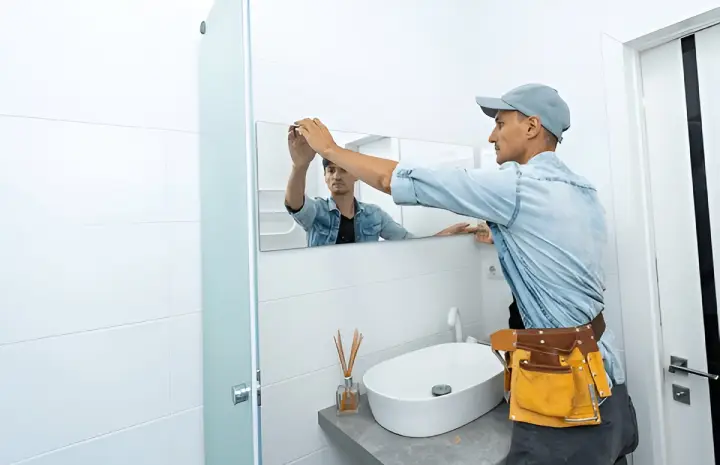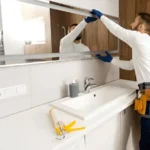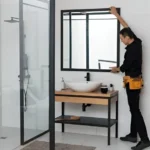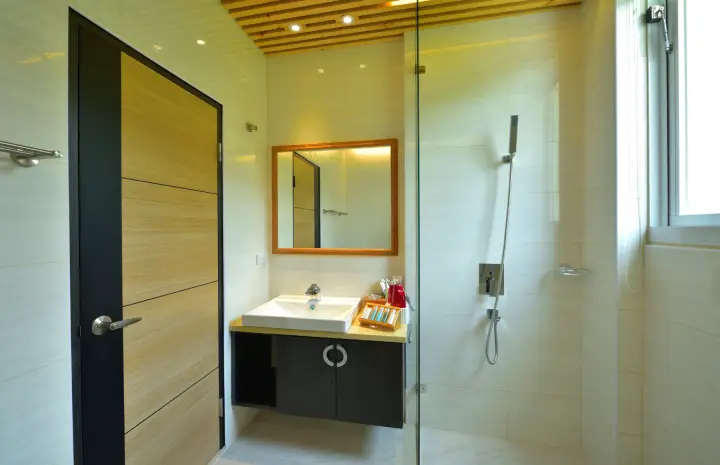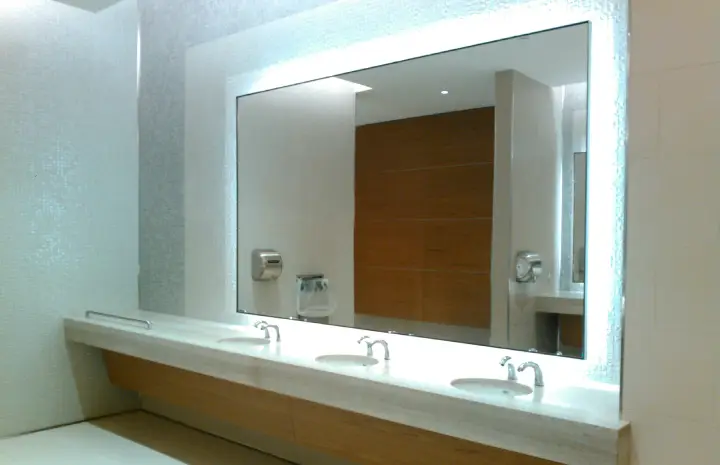Why DIY Bathroom Mirror Installation Often Goes Wrong
Installing a mirror in your bathroom may seem like a straightforward task. After all, how hard could it be to mount a piece of glass on the wall? But in reality, bathroom mirror installation requires more precision, planning, and expertise than most homeowners realize. From measuring and alignment to choosing the right adhesives and ensuring safety, there are many steps that can easily go wrong in a DIY attempt.
In Dubai, where interiors are all about modern elegance and functionality, a poorly installed bathroom mirror not only ruins the design but can also become a safety hazard. In this blog, we’ll explore the common mistakes homeowners make during DIY mirror installations, why these problems happen, and why professional help is always the smarter choice.
The Importance of Proper Bathroom Mirror Installation
A bathroom mirror isn’t just for grooming — it plays a key role in the overall look and feel of your space. The right installation ensures:
- Safety – Secure fitting prevents accidents from falling mirrors.
- Aesthetics – Proper alignment enhances your bathroom’s design.
- Functionality – Placement at the right height and angle makes it practical for daily use.
- Durability – Correct adhesives and fixings keep the mirror in place for years.
Without professional handling, these benefits are often lost, and DIY projects quickly turn into costly mistakes.
Common DIY Mistakes in Bathroom Mirror Installation
1. Incorrect Measurements
One of the most frequent problems in DIY installations is mismeasuring. A bathroom mirror must align with vanity units, lighting, and wall space. Even a few millimeters off can result in an uneven or unbalanced look.
Why It Goes Wrong:
Amateur installers often skip measuring multiple points or fail to account for wall irregularities.
2. Using the Wrong Adhesives or Fixings
Mirrors are heavy and require strong, moisture-resistant adhesives or brackets. Using household glue or weak screws may hold initially, but over time, humidity causes them to fail.
Why It Goes Wrong:
DIY installers underestimate the weight of large mirrors and the effect of bathroom moisture on adhesives.
3. Poor Wall Preparation
Bathrooms are high-moisture environments. Installing a mirror on a damp, dusty, or uneven wall weakens adhesion and leads to cracks or falls.
Why It Goes Wrong:
DIY efforts often skip sanding, leveling, or drying walls before installation.
4. Ignoring Safety Precautions
Mirrors are fragile and can shatter if mishandled. Without the right tools or protective gear, accidents can cause serious injuries.
Why It Goes Wrong:
Homeowners try lifting and installing heavy mirrors alone, without realizing the risks of broken glass.
5. Improper Alignment
Nothing ruins a bathroom’s aesthetics faster than a crooked mirror. Aligning mirrors with vanities, sinks, and lights requires precision and sometimes laser tools.
Why It Goes Wrong:
DIY installers often rely on visual judgment instead of professional leveling tools.
6. Forgetting About Lighting
Bathroom mirrors should be installed with lighting in mind, whether backlit or paired with vanity lights. Poor placement leads to shadows and reduces functionality.
Why It Goes Wrong:
DIY installations focus only on the mirror’s position, ignoring its relationship with lights.
7. Not Accounting for Expansion and Contraction
Materials expand and contract with temperature and humidity changes. Without proper spacing, a mirror can crack over time.
Why It Goes Wrong:
DIYers usually fix mirrors too tightly without leaving necessary expansion gaps.
Consequences of DIY Bathroom Mirror Installation
A poorly executed installation doesn’t just look bad — it can have serious repercussions:
- Safety Hazards – A falling mirror can cause injuries or property damage.
- Added Costs – Repairs or replacements often cost more than hiring professionals initially.
- Aesthetic Damage – Crooked or misaligned mirrors ruin bathroom interiors.
- Shortened Lifespan – Improper adhesives and fixings reduce mirror durability.
Why Professional Installation Is Better
Hiring experts for bathroom mirror installation ensures peace of mind and flawless results. Here’s why:
- Precision Tools – Professionals use laser levels, drills, and high-grade adhesives.
- Experience – Experts know how to work with different wall types, including tiles, concrete, and drywall.
- Safety First – They handle heavy mirrors with care and follow safety protocols.
- Design Insight – Installers provide guidance on ideal mirror placement for lighting and space.
- Durability – Professional fittings withstand moisture and last for years.
Tips from Experts for Long-Lasting Mirror Installations
- Choose the Right Mirror – Moisture-resistant mirrors are best for bathrooms.
- Prioritize Placement – Align mirrors with vanities and lighting for functionality.
- Use the Best Materials – Invest in high-quality adhesives and fittings.
- Maintain Regularly – Clean with non-abrasive solutions to prevent scratches.
- Rely on Experts – For large or custom mirrors, always seek professional help.
Conclusion
DIY projects can be rewarding, but bathroom mirror installation is not one of them. From misaligned fittings to safety risks, there are too many things that can go wrong without the right tools and expertise. Professional installers in Dubai ensure that your mirror is mounted safely, securely, and in perfect alignment with your interior design.
Instead of risking costly mistakes, trust experts who bring precision, safety, and style to every installation. After all, a bathroom mirror isn’t just a necessity — it’s a central element of your home’s design.
